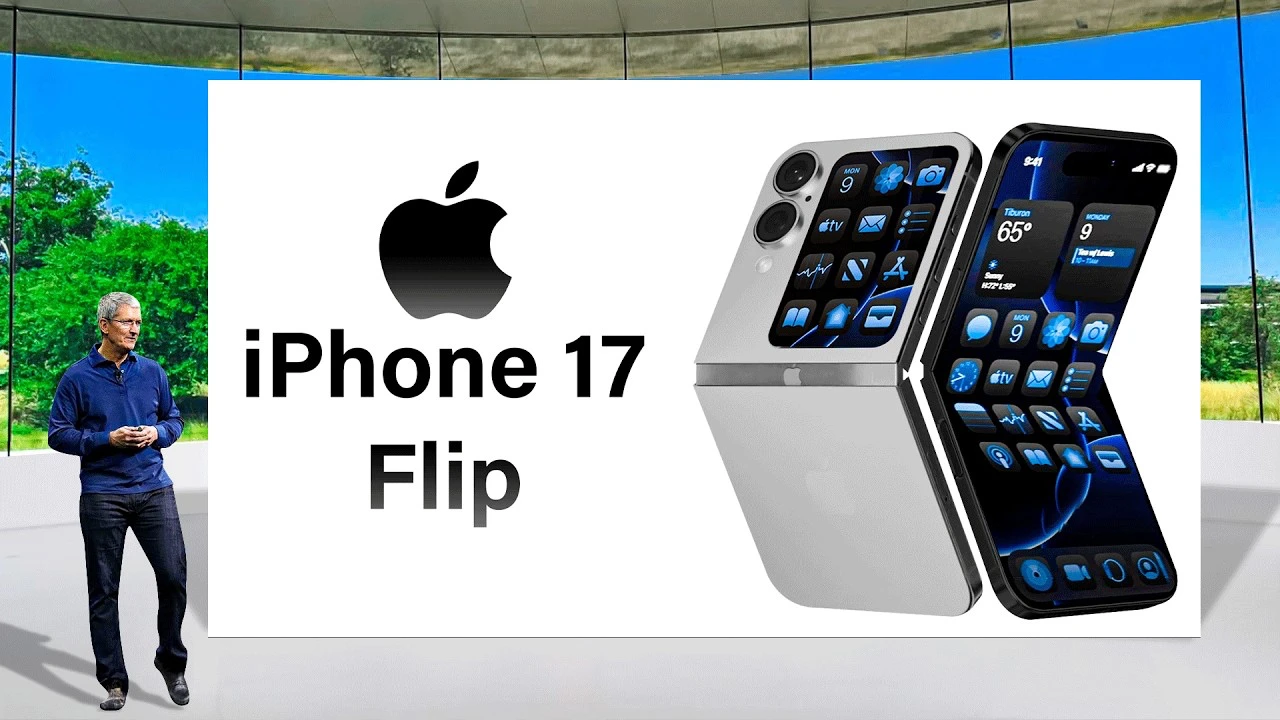
Apple is reportedly gearing up to enter the foldable smartphone market with a flip-style device, potentially named the “iPhone 17 Flip.” Expected to launch in 2026, this move could mark a pivotal moment in Apple’s product evolution, positioning the company to compete directly with established foldable models like the Samsung Galaxy Flip and Motorola Razr. With its reputation for innovation and seamless integration of hardware and software, Apple’s entry into this space could reshape consumer expectations and redefine the foldable phone category.
The iPhone 17 Flip is rumored to debut during Apple’s annual September event in 2026, a strategic timing that aligns with its traditional product release cycle. This calculated entry allows Apple to capitalize on the growing demand for foldable devices while leveraging its reputation for delivering innovative technology. What sets Apple apart is its focus on creating a seamless user experience. Unlike competitors, Apple’s foldable phone is expected to integrate deeply with iOS, ensuring that the device feels both familiar and innovative. This approach not only addresses consumer demand for fresh designs but also reinforces Apple’s ecosystem advantages, which have long been a cornerstone of its success.
Design and Features: What Could Be on the Horizon
The iPhone Flip is anticipated to adopt a clamshell design, similar to the Samsung Galaxy Flip and Motorola Razr. This compact form factor is ideal for users seeking portability without compromising on functionality. While specific details remain speculative, Apple’s track record suggests the device will feature a foldable display that meets its high standards for durability and performance.
One rumored highlight is a secondary rear screen, which could allow you to check notifications, access widgets, or even take selfies without unfolding the device. This feature would enhance usability and align with trends seen in competing models. Additionally, Apple’s expertise in hardware-software integration is likely to ensure that the iPhone Flip delivers a smooth, optimized experience, leveraging iOS to make the most of the foldable design.
- Clamshell design for enhanced portability
- Foldable display meeting Apple’s high standards
- Secondary rear screen for improved usability
- Seamless integration with iOS for an optimized experience
Competing in a Crowded Market
Apple’s foray into the foldable phone market comes at a time when competitors like Samsung and Motorola have already established themselves. Devices like the Samsung Galaxy Flip and Motorola Razr have set benchmarks for design and functionality, but Apple’s reputation for innovation could give it a unique edge. By focusing on premium materials, advanced display technology, and seamless iOS compatibility, Apple aims to differentiate its offering in a competitive landscape.
This move also reflects Apple’s broader strategy to stay ahead of consumer trends. Foldable smartphones have gained popularity among users looking for unique designs and enhanced multitasking capabilities. By introducing the iPhone 17 Flip, Apple not only meets this demand but also reinforces its position as a leader in smartphone innovation.
The iPhone Flip is expected to come with a premium price tag, likely exceeding $1,100. While this places it above standard iPhone models, it aligns with Apple’s strategy of targeting the high-end market. The pricing reflects Apple’s confidence in the device’s ability to deliver value through its innovative design and features. Interestingly, the iPhone Flip is unlikely to be part of the Pro lineup. Instead, it may represent a new category within Apple’s product range, focusing on the unique appeal of the flip design rather than advanced professional features. This distinction allows Apple to cater to a broader audience while maintaining its premium brand image.
What’s Next for Apple’s Product Lineup?
The iPhone Flip is just one piece of Apple’s evolving product strategy. Rumors suggest that the company is also working on a redesigned iPhone 17 Pro, expected to launch in 2025. This redesign could introduce new materials, slimmer profiles, and enhanced performance, setting the stage for the iPhone Flip’s debut the following year.
Additionally, speculation about a potential “iPhone Air” or “iPhone Slim” hints at Apple’s interest in exploring lightweight, minimalist designs. These developments underscore Apple’s commitment to innovation across its product lineup, ensuring that each device caters to specific user needs and preferences.
As 2026 approaches, the tech world will be watching closely to see how Apple’s latest innovation shapes the future of mobile technology. The iPhone Flip represents a bold step into the foldable smartphone market, blending innovative design with the seamless functionality of iOS. By addressing consumer demand for fresh designs and enhanced usability, Apple is poised to redefine what a foldable smartphone can offer. With a premium pricing strategy and a focus on differentiation, the iPhone Flip could set new benchmarks for the industry.
Source & Image Credit: Matt Talks Tech
Latest Geeky Gadgets Deals
Disclosure: Some of our articles include affiliate links. If you buy something through one of these links, Geeky Gadgets may earn an affiliate commission. Learn about our Disclosure Policy.